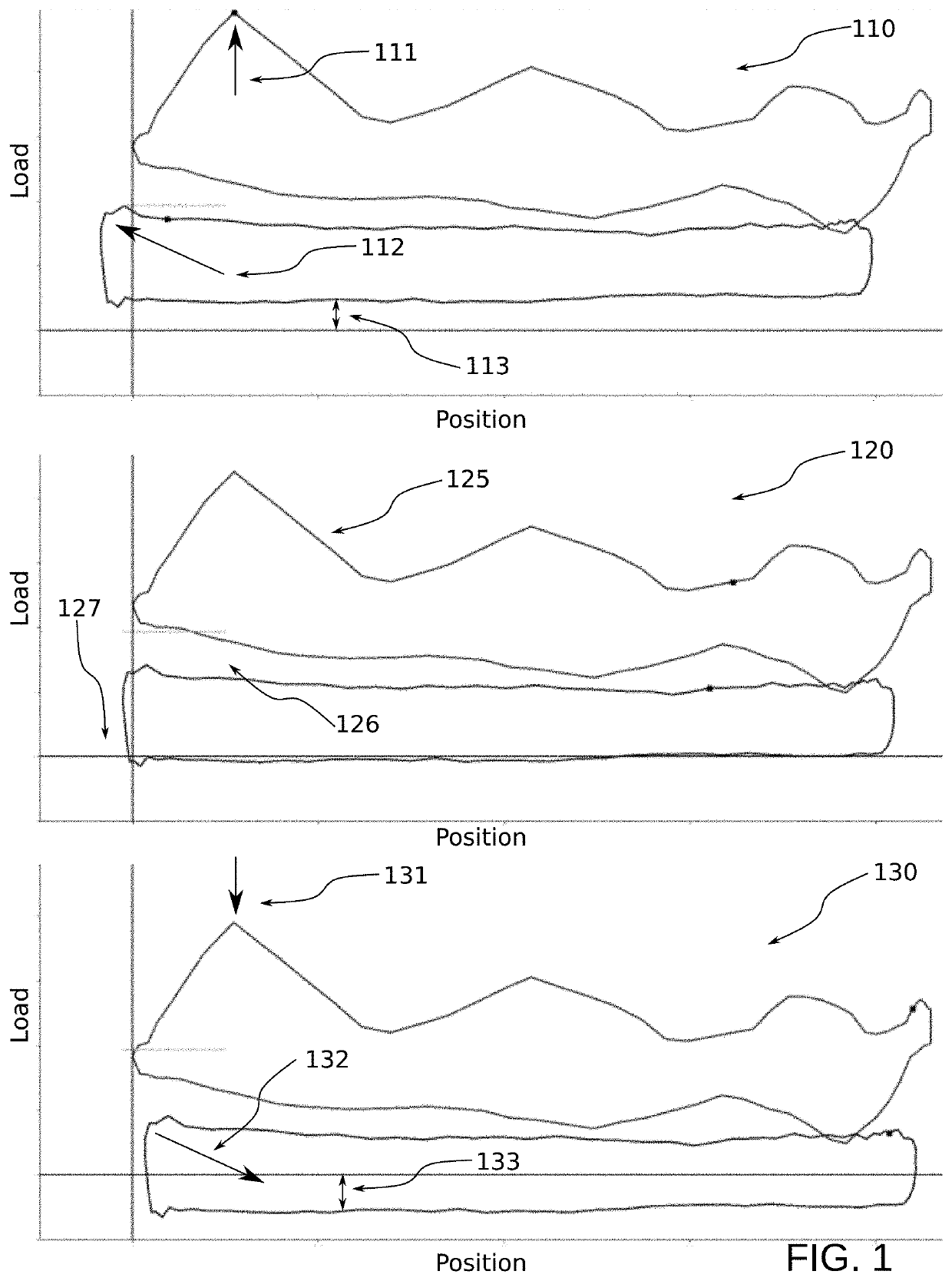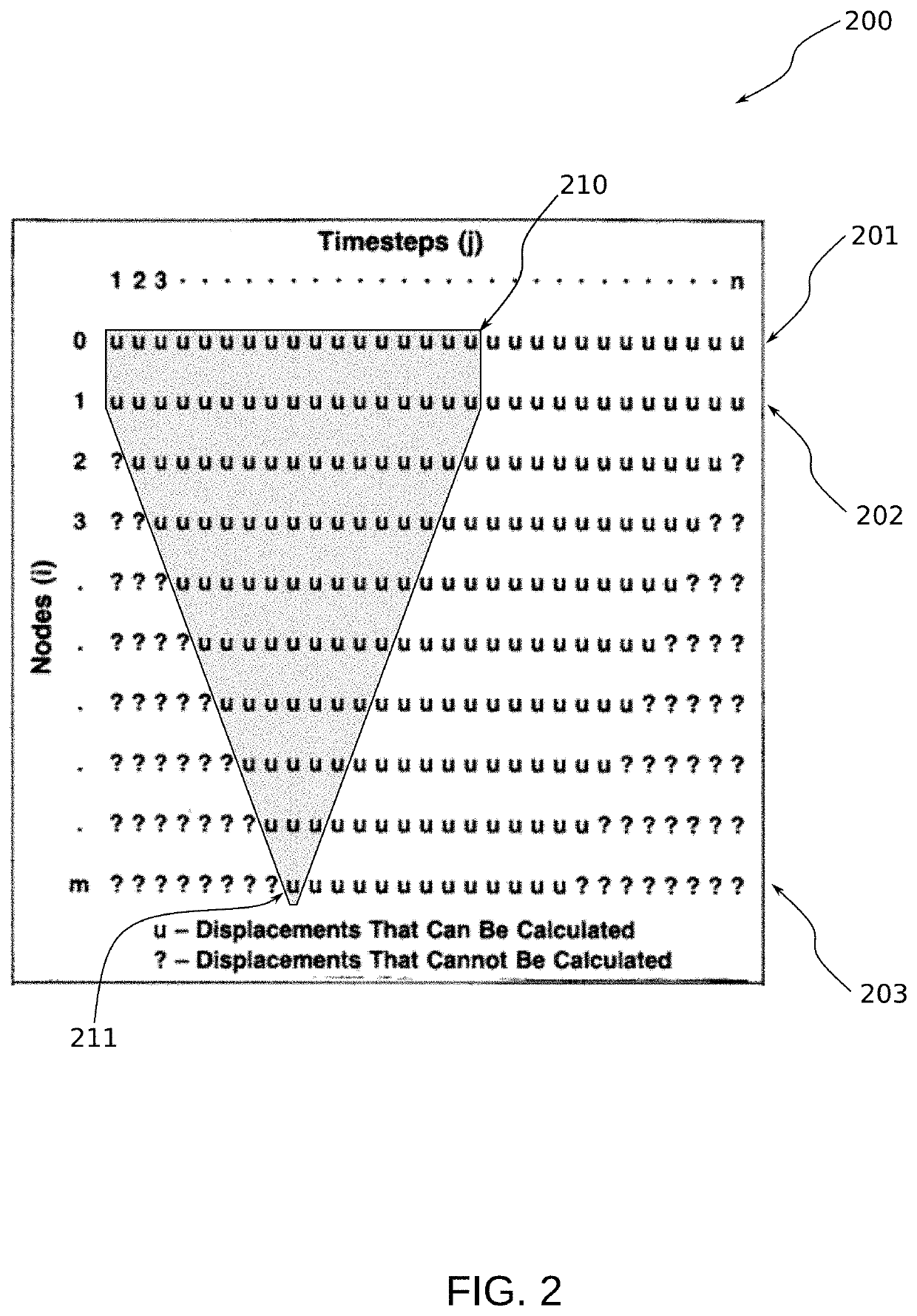Dynamic Pumpjack Load Verification
a pumpjack and load verification technology, applied in the direction of instruments, borehole/well accessories, construction, etc., can solve the problems of inaccurate calculation of downhole cards, unobserved surface load calibration in practice, and correlation between diagonal card locations, so as to facilitate the diagnosis of fluid density and accurately diagnose the operation of running wells.
- Summary
- Abstract
- Description
- Claims
- Application Information
AI Technical Summary
Benefits of technology
Problems solved by technology
Method used
Image
Examples
Embodiment Construction
Definitions
[0023]The dyno (or dynamometer) card refers to the common plot of load vs. position for a single stroke of the pumping system. Dyno cards are gathered at surface from measured load and position. The downhole pump card (and at arbitrary depths along the rod-string) is calculated through a mathematical method commonly referred to as the “wave equation”, described below.
[0024]The well controller refers to an existing industrial well control system. These are often referred to in the industry as a pump-off controller (POC). Pump-off controllers are responsible for digitizing load and position measurements and controlling the operation of the well. This includes safety shutdowns based on load thresholds but can also include “normal” shutdowns due to operational conditions. The “pumped off” condition refers to the state of the down-hole pump, where the fluid displaced by the pump exceeds the inflow from the reservoir. The pump then does not have sufficient fluid for a full pump...
PUM
| Property | Measurement | Unit |
|---|---|---|
| elasticity | aaaaa | aaaaa |
| pressures | aaaaa | aaaaa |
| surface loads | aaaaa | aaaaa |
Abstract
Description
Claims
Application Information
 Login to View More
Login to View More - R&D
- Intellectual Property
- Life Sciences
- Materials
- Tech Scout
- Unparalleled Data Quality
- Higher Quality Content
- 60% Fewer Hallucinations
Browse by: Latest US Patents, China's latest patents, Technical Efficacy Thesaurus, Application Domain, Technology Topic, Popular Technical Reports.
© 2025 PatSnap. All rights reserved.Legal|Privacy policy|Modern Slavery Act Transparency Statement|Sitemap|About US| Contact US: help@patsnap.com



